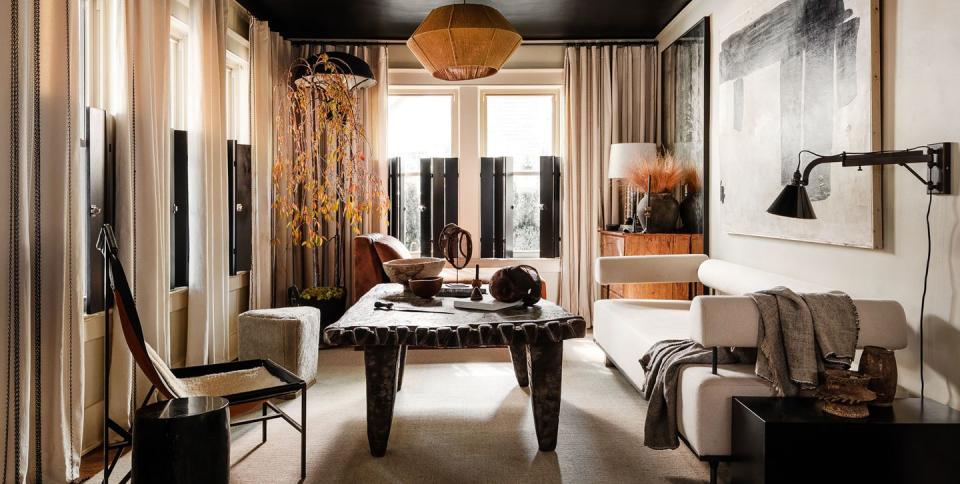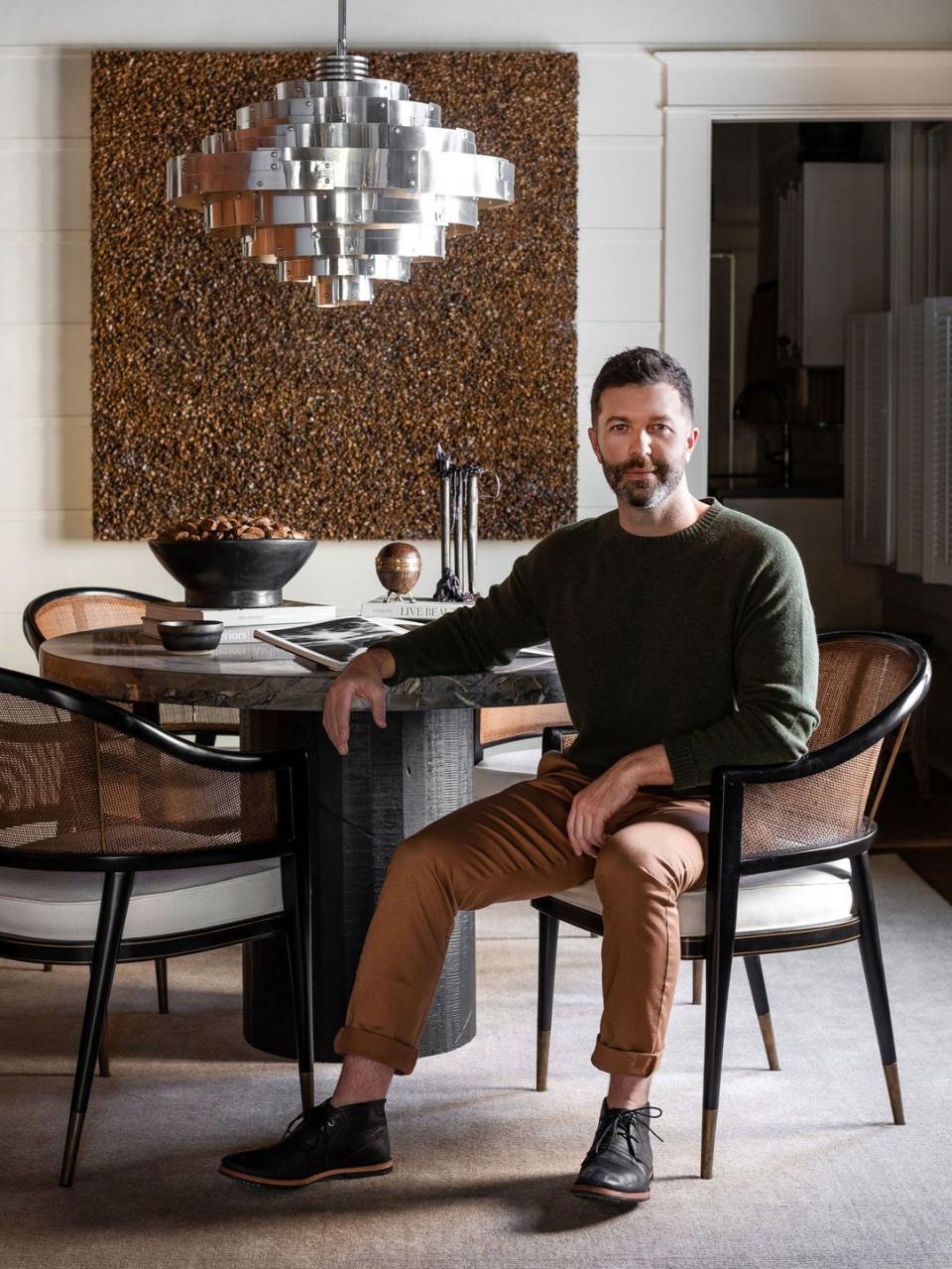Texture and Handmade Touches Define This Moody Memphis Bungalow

Resourcefulness and a knack for hospitality come naturally to the Memphis, Tennessee–based designer Sean Anderson. He’s originally from rural Mississippi, a place where (per the designer and this Mississippi-born reporter) you have to create your own fun. That same home-grown spirit animates Anderson’s approach to design, a career for which he had no formal training but had something just as useful: a mother who encouraged his love of art.
“I entered this industry self-taught and have never stopped wanting to learn more, so I consider every day to be an education,” Anderson says. “And every time I’m installing or photographing a project, that’s my final exam.”
So when he recently moved into an eight-room, 1930s bungalow in East Memphis, he was determined to create a place that could hold spaces to entertain and pockets to unwind.

This project was especially close to Anderson’s heart. The designer had initially embarked on the project for a friend. But before they could realize their design vision, the friend died of cancer. In 2018, with the support of his friend’s family, Anderson moved into the home and decided to honor his memory and the space they built together by giving it a second life.
“It’s really been, all in all, my way to mourn that loss and deal with that loss,” Anderson says.
Without changing the layout of the home, Anderson got to work, repainting the walls in the living room and study in Monterey White by Benjamin Moore and—surprisingly—the ceiling in Black Magic by Sherwin Williams to create an intimate space “to nestle in and cozy up,” he says. He collaborated with the Birmingham, Alabama–based star upholsterer and furniture designer Grant Trick to create the exact sofa he imagined for the space. Anderson placed a cocktail table (he had passed by it in an antique shop for years and finally snatched it up) and placed it alongside the sofa.

Anderson used his own pieces to fill out the space, objects that reflect an aesthetic, which he calls “moody, collected, and intentional.” Among his “revolving door of obscure curiosities,” Anderson’s favorites have been a collection of arrowheads from his family’s farm in Mississippi that he individually framed and hung on the study wall, as well as a collection of aspirin boxes from an old pharmacy that he also framed and placed above the mantel in the foyer (treasures, he admits, that “you know, some might refer to as junk.”) To visually ground the space in the dining room and to add even more texture, he channeled his Mississippi childhood and turned to the earth by covering a square canvas with pebbles.
The designer placed sentimental photos along the black-painted walls surrounding the door frame of the den. “I don’t like a lot of framed photography everywhere,” he says. “I just gathered my favorite family portraits, photographs with friends, vacation photos, and they continue to grow—as more experiences come my way, they get added to the wall.”
One experience Anderson can celebrate is completing his friend’s home. “We had worked on [it] and talked about [it] for so many years,” Anderson reflects.
“He’d be proud,” the designer adds.
You Might Also Like

